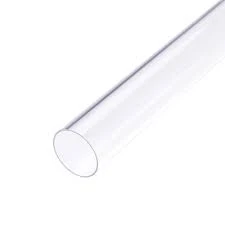تشرینی دووەم . 04, 2024 19:37 Back to list
Guide to Understanding UPVC Pipe Fittings for Effective Plumbing Solutions
Understanding UPVC Pipe Fittings A Comprehensive Guide
UPVC, or Unplasticized Polyvinyl Chloride, is a type of plastic widely used in the construction and plumbing industries. It has gained immense popularity due to its durability, resistance to corrosion, and cost-effectiveness. Among the essential components of UPVC systems are the pipe fittings, which play a crucial role in ensuring the integrity and efficiency of fluid transport systems. This article delves into the features, types, advantages, and applications of UPVC pipe fittings.
Features of UPVC Pipe Fittings
UPVC pipe fittings are characterized by their strength and rigidity. Unlike regular PVC, UPVC does not contain plasticizers, making it more robust and less flexible. This attribute allows UPVC fittings to withstand high pressure and temperature variations, making them suitable for various applications, including water supply and sewage systems.
Moreover, UPVC fittings are lightweight, which simplifies transportation and installation processes. They are available in a range of sizes, allowing for versatility in different plumbing configurations. The fittings also boast a smooth internal surface, reducing friction loss and improving flow rates. Additionally, they are resistant to chemicals, which makes them ideal for carrying water and other fluids without the risk of contamination.
Types of UPVC Pipe Fittings
UPVC pipe fittings come in several types, each designed for specific functions. Some of the most common types include
1. Elbows Used to change the direction of the piping system at angles of 90° or 45°.
2. Tees Feature a T-shape that allows the connection of three pipes, enabling branching in the system.
3. Reducers Used to connect pipes of different diameters, effectively transitioning from a larger to a smaller pipe.
4. Couplings Serve to connect two pieces of UPVC pipe, ensuring a tight seal.
5. End Caps Used to seal the end of a pipe, preventing flow and contamination.
6. Adapters Facilitate the connection between UPVC fittings and other types of materials or fittings.
Each type of fitting plays a significant role in ensuring the overall functionality and efficiency of the piping system.
Advantages of UPVC Pipe Fittings
upvc pipe fitting

The use of UPVC pipe fittings offers several advantages
- Corrosion Resistance UPVC is inherently resistant to rust and corrosion, which increases the longevity of the fittings and the piping system.
- Cost-Effective UPVC fittings are generally less expensive compared to their metal counterparts, making them a budget-friendly choice for various projects.
- Easy Installation Their lightweight nature and simple joining methods, such as solvent cementing, make installation quick and straightforward, reducing labor costs.
- Low Maintenance UPVC fittings require little to no maintenance over their lifespan, as they do not crack, degrade, or corrode over time.
- Environmental Impact Being recyclable, UPVC fittings are an environmentally responsible choice compared to other materials that may not be as easily repurposed.
Applications of UPVC Pipe Fittings
UPVC pipe fittings are widely used in numerous applications, including
- Residential Plumbing For water supply lines, drainage, and waste systems due to their reliability and affordability.
- Irrigation Systems Commonly utilized in agricultural fields for delivering water to crops efficiently.
- Industrial Applications Employed in factories and processing plants for transporting chemically aggressive fluids.
- Sewage Systems Used in the construction of sewer lines and wastewater treatment plants due to their sturdiness and corrosion resistance.
Conclusion
UPVC pipe fittings are an essential element in modern plumbing and construction, providing a reliable, cost-effective, and durable solution for fluid transport systems. Their various types and advantages make them suitable for a wide range of applications, from residential plumbing to industrial processes. As demand for efficient and sustainable building solutions continues to rise, UPVC pipe fittings are likely to remain a popular choice for both new constructions and renovations.
-
High-Quality PPR Pipes and Fittings Durable ERA PPR & PVC PPR Solutions
NewsJul.08,2025
-
Black HDPE Cutting Board - Durable, Non-Porous & Food Safe HDPE Plastic Cutting Board
NewsJul.08,2025
-
High-Quality CPVC Panel Durable HDPE & PVC Panels Supplier
NewsJul.08,2025
-
Double PE Welding Rod Supplier - High Strength, Durable & Versatile Welding Solutions
NewsJul.07,2025
-
High-Quality PVC-O Pipe Supplier Durable 75mm PVC Pipe & Connections Leading PVC Pipe Company
NewsJul.07,2025
-
HDPE Drainage Pipe Supplier – Durable & Corrosion-Resistant Solutions
NewsJul.06,2025

